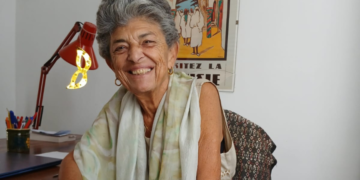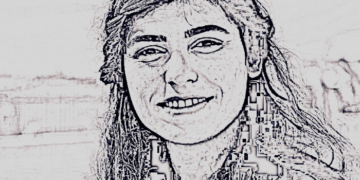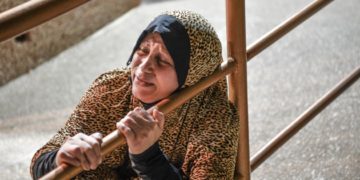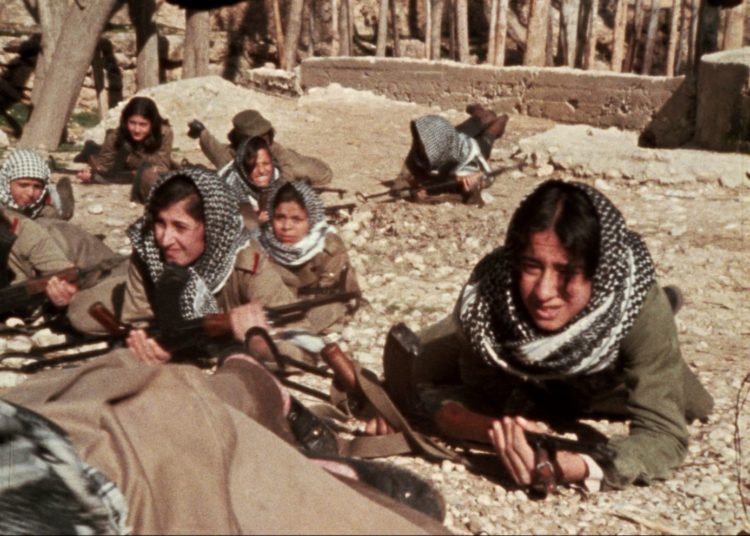This post is also available in: Français (French) العربية (Arabic)
In my grandmother’s native village in Algeria, tradition dictates that the first child in a family must be a boy—“for pride and heritage!” she would say.
I spent my whole life unconsciously apologizing for not being born a boy, trying to compensate for this transgression against fate. I imposed excellence on myself so that my family name would always be on a pedestal, in an attempt to make my ancestors forget that this name would not be passed on to my offspring. I was killing myself in search of recognition. Meanwhile for my cousins, who were born with the right pair of chromosomes, it was enough to simply exist.
In my grandmother’s ancestral tradition, the largest pieces of meat at the table are undoubtedly the men’s share. “They need to eat more, to be strong and robust, like lions!” she argued. The funny way this played out is in most of my uncles having higher-than-normal cholesterol levels.
Straight hair and lots of wisdom
I never lacked any love from my grandmother. Quite the contrary, she saturated my childhood with tenderness. I remember clearly the special part of every evening when she would gently brush my hair, humming Berber nursery rhymes. Once untangled, she would then wrap my hair in a Qardoun, a kind of fabric ribbon, so that it would be smooth and silky when I woke up. She always marked the end of this process by giving me a pat on the head and another on my bum. She accompanied this slightly confusing gesture, which never failed to startle me even though I always knew it was coming, with a ritualistic saying that loosely translates to “may wisdom be in the head, down long hair to the bum.” To her great displeasure, the Qardoun never proved its worth; upon the slightest contact with humidity, my unruly hair always went back to its Mediterranean nature. As for wisdom, my prematurely progressive and feminist ideas made her dizzy. In short, she loved me with the unconditional love that goes to the ugly duckling, like when we feel tenderness for an anomaly.
Beauty standards are very normative in my grandmother’s ancestral tradition. In her view, a girl’s beauty lies in her translucent whiteness, her long, smooth, and silky hair, her harmonious shapes and delicate ankles. The ancestors didn’t care about the uncertainties of DNA and their share of surprises. And men are obviously exempt from this imperative. “Beauty is a woman’s business,” say the people in my home. There are no beauty standards for men in my grandmother’s ancestral tradition. They can settle for what genetics has given them. They can be dark brown, light blonde, redheads, tall and strong, short and valiant—in short, “men have no flaws,” as the saying goes.
I was born at a time when hair straighteners, Brazilian keratin treatments, and hair botox didn’t exist yet. For straight hair, you had the Qardoun and the tourbillon (a technique that consists of wrapping the hair all around the head, fixing it with pins, and then covering it all night with a scarf). And if none of these techniques was effective, there was always the iron. I spent a lot of time in my life swimming against the current of what I am: a Mediterranean with unruly hair. I rowed through those currents to reach self-acceptance. It’s exhausting to build one’s identity on negation.
How do we foster self-acceptance in a world plagued by chronic dissatisfaction?
Society has drawn, for women—particularly those from Maghreb countries—a path marked with safeguards yet strewn with obstacles to limit their individuality as much as possible: you have to be feminine without being excessive, otherwise it looks bad, you have to be intelligent but not too intelligent, otherwise it scares men, you have to be shy, have a soft voice, not laugh too loudly, you have to have smooth legs and whatever else it is that you have to have.
I wonder who decided what a girl should or shouldn’t be. At what point in the history of humanity did this discussion come up? I’m trying to picture some sort of prehistoric convention or summit. Around a flat rock standing in for a table, I picture an armada of men in bison skin suits, looking very serious—evidently, when it comes to the fate of women, it’s always men who are called upon to discuss it. So I picture these men voting by show of hands on each of the clauses, flagrantly deciding where privilege would go in this world, decreeing that the absence of women—who had not been invited—was tantamount to tacit agreement on their part. I then picture these men, satisfied with the day’s results, each going back to his cave to find his female companion. What could the panorama of convincing arguments have been, for them to be able to swallow such disproportionate nonsense?
It's a thin line between our grandmothers and Kim K
My absurd thoughts ricochet on the blazing horizon, and my questions get lost in the foggy ether of the unknown. Perched on my balcony, I ponder aimlessly as the sun sets without the slightest empathy for my darkness. The voice inside me remakes the world and sends all my acquired knowledge flying. It questions everything, deconstructs everything, amuses itself by weaving stitches and then undoing them one by one, just for fun. To quiet down the noise in my brain, I compulsively scroll on my phone in search of neuro-inhibiting entertainment. Oh Instagram! This hypnotic vortex that sucks in users’ souls to plunge them into a world of perfectly framed images and flawless bodies. A world where no one deigns to live for themselves, where everyone refuses to go unnoticed.
I was mechanically scrolling through the news feed when I suddenly realized that there is only one step between the ancestral traditions of my grandmother’s native village and Kim Kardashian’s page. It’s obvious that Kim K is too tanned and too scantily dressed for my grandmother’s taste, but, when it comes down to it, both in their own way perpetuate the cult of submission. With Instagram, people are reconnecting more than ever with their ancestral commitments. Be it in my grandmother’s village or on Insta, these two parallel worlds enslave the female condition under the yoke of diktats, putting men’s primary desires on a pedestal: an ever-thinner waist, to the point of crushing one’s guts, lips so full they block the nostrils, a nose narrow to the point of apnea. Both contribute to limiting women in the development of their own identities, keeping them from their genetic and ethnic authenticity.
My grandmother told me that when she was younger, she and her peers would delicately dye their heels with the precursor of lipstick to give them a pinkish color. This subtle practice was meant to titillate the imagination of the opposite sex and suggest the delicateness of more intimate parts. I better understand the business of cosmetic surgery and the outrageous sums spent to achieve an absurd ideal. How do we foster self-acceptance in a world plagued by chronic dissatisfaction? How can we protect ourselves from this endless quest for perfection? From the pursuit of an unattainable mirage that leads straight to the hell of self-contempt?
Ultimately, self-acceptance and female empowerment come through the deconstruction of ancestral and contemporary myths that perpetuate submission. Be it through my grandmother’s traditions or standards imposed by social media, it is crucial to acknowledge and reject these oppressive norms. By embracing our authenticity and celebrating the diversity of our identities, we can hope to build a future in which women are valued for their individuality and unique contributions, free from diktats and unrealistic expectations.
“What the public criticizes in you, cultivate. It is you,” said Jean Cocteau.
This investigation was carried out with the support of the AGEE - Alliance for Gender Equality in Europe.
































